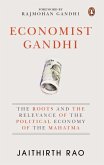Writings on post-war Japanese politics have tended to take for granted the dominance of the Liberal Democratic Party (LDP) as inevitable, without questioning how this came about. This book analyses the nature of Japanese party politics over the first four decades following the Second World War, assessing how the chief contenders - the conservative LDP and the socialists JSP (Japan Socialist Party) - competed in terms of their strengths and weaknesses relative to the other. Throughout, it addresses the questions: How effectively were the parties' strengths harnessed? How did they alter over time? To what extent was the winning formula challenged? Did the loser have access to strengths with a major potential, and, if so, why did these remain underdeveloped? It extends widely to include discussion of the political system, the social and economic environment in which parties operated, internal party matters, especially factions, personal support groups, special interest groups, and the role of government bureaucracy. It shows why the Liberal Democratic Party was dominant, why the Japan Socialist Party remained out of power, and how successive prime ministers conducted policymaking in ways which often resulted in the bureaucracy taking the lead. Overall, the book shows how precedents for the political system and for policymaking were set in this important period, precedents which continue, and which have contributed significantly to the present conservative stance on many key issues.
Hinweis: Dieser Artikel kann nur an eine deutsche Lieferadresse ausgeliefert werden.
Hinweis: Dieser Artikel kann nur an eine deutsche Lieferadresse ausgeliefert werden.








